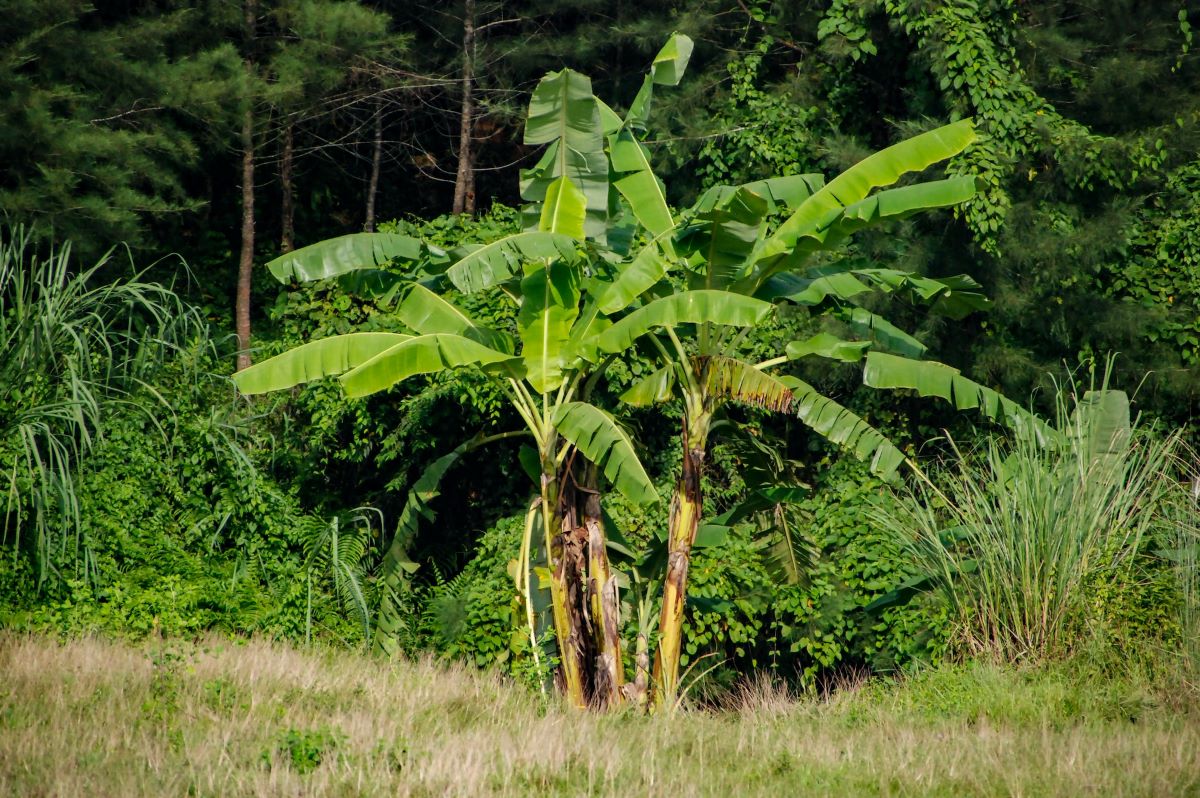Home>Gardening Tips and Tricks>Eco-Friendly Gardening>Where Can I Collect Landscaping Rock On Public Land


Eco-Friendly Gardening
Where Can I Collect Landscaping Rock On Public Land
Modified: February 8, 2024
Looking for eco-friendly gardening options? Discover where you can find landscaping rock on public land to enhance your garden's sustainability.
(Many of the links in this article redirect to a specific reviewed product. Your purchase of these products through affiliate links helps to generate commission for Chicagolandgardening.com, at no extra cost. Learn more)
Table of Contents
- Introduction
- Importance of Landscaping Rocks
- Regulations and Permissions for Collecting Landscaping Rocks
- Researching Public Land for Rock Collection
- National Parks and Recreation Areas
- National Forests and Bureau of Land Management (BLM) Lands
- State Parks and Wildlife Management Areas
- County and City Parks
- Conservation Lands and Nature Preserves
- Safety Considerations when Collecting Landscaping Rocks on Public Land
- Tips for Responsible Rock Collection
- Conclusion
Introduction
Welcome to the world of eco-friendly gardening! In a time where environmental consciousness is at its peak, more and more people are turning to sustainable practices to create beautiful and vibrant gardens. One such practice is eco-friendly gardening, which focuses on minimizing the use of harmful chemicals and maximizing the benefits of nature.
One key aspect of eco-friendly gardening is the use of landscaping rocks. These natural elements not only enhance the aesthetic appeal of your garden but also serve several practical purposes. From retaining moisture in the soil to providing a stable base for walkways and paths, landscaping rocks are versatile and eco-friendly alternatives to traditional landscaping materials.
When it comes to sourcing landscaping rocks, many enthusiasts wonder whether it is possible to collect them on public land. The good news is, in certain circumstances, you can! However, it is essential to understand the regulations and permissions surrounding rock collection to ensure you are effectively preserving the environment and adhering to legal requirements.
In this comprehensive guide, we will delve into the topic of collecting landscaping rocks on public land, providing you with valuable information and tips to make your endeavors successful and sustainable. We will explore various types of public land, including national parks, forests, state parks, and more, and discuss the regulations and safety considerations for rock collection in each of these areas.
So, whether you are a seasoned gardener or just starting on your journey towards eco-friendly landscaping, this guide is here to assist you. Let’s dive in and discover the wonderful world of eco-friendly gardening and the possibilities of collecting landscaping rocks on public land!
Importance of Landscaping Rocks
Landscaping rocks play a crucial role in creating stunning outdoor spaces that are not only aesthetically pleasing but also sustainable. Here are a few reasons why incorporating landscaping rocks into your garden is essential:
- Water Conservation: Landscaping rocks act as a natural barrier, preventing water evaporation and allowing the soil to retain moisture. This is particularly beneficial in arid regions or during dry spells, as it helps conserve water and reduce the need for excessive irrigation.
- Erosion Control: Sloping or uneven landscapes are prone to erosion caused by wind and water. By strategically placing landscaping rocks, you can create barriers that slow down the flow of water and prevent soil erosion, ensuring the stability and integrity of your garden.
- Weed Suppression: Unwanted weeds can quickly take over a garden, competing with your plants for nutrients and sunlight. By covering the soil with landscaping rocks, you can inhibit weed growth and minimize the need for chemical herbicides, making your garden more eco-friendly.
- Enhanced Drainage: Excess water can often lead to drainage issues and waterlogged soil, which can be detrimental to plant health. Landscaping rocks can be used to create drainage channels, allowing water to flow freely and preventing waterlogging, promoting healthier root growth.
- Hardscaping Element: Landscaping rocks can be used to create stunning hardscaping features such as pathways, rock gardens, and decorative rock walls. These elements add dimension, texture, and visual interest to your garden, creating a unique and captivating outdoor space.
Furthermore, landscaping rocks are eco-friendly alternatives to traditional landscaping materials such as concrete or asphalt. They are natural, sustainable, and can be easily sourced from public land, reducing the need for mining and manufacturing of artificial materials. By utilizing rocks from public land, you are not only adding beauty to your garden but also contributing to the preservation of natural resources.
In the next sections, we will explore the various types of public land where you can collect landscaping rocks, and the regulations and permissions you need to be aware of to engage in responsible rock collection. So, let’s dive in and discover the bountiful opportunities available in public land for eco-friendly gardening!
Regulations and Permissions for Collecting Landscaping Rocks
Before embarking on your rock-collecting adventure on public land, it is crucial to familiarize yourself with the regulations and permissions governing such activities. These regulations are in place to protect sensitive ecosystems, preserve natural resources, and ensure the sustainability of public lands. Here are some key considerations to keep in mind:
- Research and Permits: Start by researching the specific land management agency or department that oversees the area you intend to collect rocks from. This could be the National Park Service, the U.S. Forest Service, or state and local park departments. Check their website or contact their office to learn about the rules and regulations regarding rock collection in that particular area.
- Permit Requirements: Some public lands require permits for rock collection, especially if it is for commercial purposes or involves the use of heavy machinery. Even for personal use, it is best to check if a permit is required to ensure you are in compliance with the regulations. Permits may have restrictions on the quantity and size of rocks you can collect, as well as the areas where collection is allowed.
- Protected Areas: Certain areas within public lands may be designated as protected, such as fragile ecosystems, archaeological sites, or habitats for endangered species. These areas are off-limits for rock collection to preserve their integrity. Make sure to familiarize yourself with any restricted zones and respect the boundaries set by the land management agency.
- Leave No Trace: The principle of “Leave No Trace” applies to rock collection as well. This means that you should leave the environment as you found it, without causing any damage or disturbance. Avoid digging substantial holes, removing large quantities of rocks, or disrupting the surrounding vegetation. Take only what you need and ensure minimal impact on the ecosystem.
- Transportation and Weight Limits: If you plan to collect larger rocks, consider the transportation logistics. Some public lands may have weight restrictions for vehicles or require special permits for transporting heavy materials. Familiarize yourself with these regulations to ensure compliance and safety.
- Code of Conduct: Lastly, follow the code of conduct outlined by the land management agency. This may include guidelines on camping, fires, waste disposal, and respecting other visitors. By adhering to these guidelines, you contribute to the preservation and enjoyment of public lands for all.
Remember, these regulations are in place not to restrict your access or enjoyment but to maintain the delicate balance of nature and ensure the sustainable use of public lands. By understanding and respecting these rules, you can engage in responsible rock collection and contribute to the preservation of these beautiful landscapes.
Now that we have explored the regulations and permissions surrounding rock collection on public land, let’s move on to the next section, where we will discuss how to research public land areas and identify the best locations for collecting landscaping rocks!
Researching Public Land for Rock Collection
When it comes to collecting landscaping rocks on public land, thorough research is key. By taking the time to research and identify the best areas for rock collection, you can ensure a more fruitful and fulfilling experience. Here are some tips for researching public land for rock collection:
- Land Management Agencies: Start by identifying the land management agency or department that oversees the public land you are interested in. This can be the National Park Service, the U.S. Forest Service, state park departments, or local park authorities. Visit their websites or contact their offices to gather information about their rules, regulations, and any specific guidelines for rock collecting.
- Online Resources: There are several online resources available that provide information about public land and its regulations. Websites such as the Bureau of Land Management, National Park Service, and state park websites often offer detailed information about rock collection permissions, permit requirements, and restricted areas. Utilize these resources to familiarize yourself with the specific rules of the areas you plan to visit.
- Guidebooks and Maps: Guidebooks and maps dedicated to outdoor activities and rockhounding can be valuable tools in your research. Look for guidebooks that focus on rock collecting in the region you are interested in and study the maps to identify areas known for their abundant rock formations.
- Local Rockhound Clubs and Forums: Connect with local rockhound clubs or join online rock collecting forums. These communities of experienced enthusiasts can provide firsthand insights, tips, and recommendations for the best rock collecting sites in your area. Engage with fellow rockhounds, ask questions, and share experiences to enhance your knowledge and expand your rock collection spots.
- Visitor Centers and Ranger Stations: When you arrive at your chosen public land area, stop by the visitor center or ranger station. The staff at these facilities are well-versed in the rules and regulations of the area and can provide up-to-date information on any restrictions, permits, or guidelines for rock collection. They can also provide recommendations on specific locations within the park or forest that are known for their rock diversity.
- Local Knowledge: Don’t underestimate the power of local knowledge. Engage with locals, such as park rangers, residents, and fellow outdoor enthusiasts, to gain insights into the best rock collecting areas in the vicinity. Their firsthand experience and familiarity with the land can lead you to hidden gems and lesser-known locations.
By conducting thorough research and gathering information from various sources, you can ensure that your rock collection endeavors are not only legal and responsible but also fruitful and rewarding. So, take the time to dive into the world of public land research, and uncover the countless possibilities that await you!
Next, we will explore the different types of public land where you can collect landscaping rocks, including national parks, forests, state parks, and more. So, let’s continue our journey and discover the rich landscapes that provide a wealth of rock-collecting opportunities!
National Parks and Recreation Areas
National parks and recreation areas are renowned for their stunning landscapes, diverse ecosystems, and unique rock formations. While rock collecting is generally prohibited in most national parks to preserve the natural environment, there are some exceptions and opportunities that you can explore.
Firstly, it is important to note that removing rocks or any natural resources from national parks without permission is strictly prohibited. However, national parks may offer designated areas where limited rock collecting is permitted for educational or scientific purposes. Check with the park authorities to see if such programs exist and if you can participate in guided rock collecting activities.
Often, national parks have visitor centers that showcase collections of rocks and minerals found within the park. These displays not only educate visitors about the geological features but also inspire a greater appreciation for the natural wonders protected within the park boundaries.
Moreover, many national parks have rock shops or gift stores where you can purchase rocks, minerals, and fossils collected from surrounding areas. These items are ethically sourced and provide a great opportunity to add unique rocks to your collection without impacting the fragile ecosystems within the park.
Additionally, national recreation areas, which are managed by the National Park Service, may have different regulations regarding rock collection. Some recreation areas allow limited rock collecting for personal use, but it is crucial to consult the specific regulations and permits for each area before collecting any rocks.
Remember, the primary goal of national parks and recreation areas is to protect and preserve natural resources, so it is essential to respect the regulations and guidelines set forth by the park management. Enjoy the scenery, take photographs, and leave the rocks where they belong to ensure the sustainability and preservation of these magnificent natural spaces.
Now that we have explored national parks and recreation areas, let’s move on to the next section, where we will discuss the opportunities for rock collection in national forests and Bureau of Land Management (BLM) lands.
National Forests and Bureau of Land Management (BLM) Lands
National forests and lands managed by the Bureau of Land Management (BLM) offer vast opportunities for rock collecting. These public lands encompass diverse landscapes, including mountains, deserts, and grasslands, which are home to a wide variety of rock formations.
Unlike national parks, national forests and BLM lands generally allow rock collecting for personal use, as long as it is done responsibly and in compliance with specific regulations. However, it is important to note that regulations may vary from one forest or BLM district to another, so it is essential to research and understand the rules of the specific area you plan to visit.
Some national forests and BLM lands require permits for rock collecting, while others have specific guidelines on the quantity and size of rocks that can be collected. Additionally, certain areas within national forests may be off-limits for rock collecting due to their ecological significance or to protect sensitive habitats.
To ensure a successful rock collecting trip in national forests and BLM lands, consider the following tips:
- Research and Plan: Study the specific regulations and permits for the national forest or BLM land you wish to visit. Contact the local ranger station or check their website to gather information on rock collecting opportunities, permit requirements, and any restricted areas.
- Stay on Designated Routes: Stick to established trails and roads when accessing rock collecting areas. Avoid deviating from designated routes to protect vegetation and prevent erosion.
- Observe Size and Quantity Limits: Adhere to size and quantity limits set by the land management agency. Respect the environment by only collecting what you need and not depleting the natural resources.
- Leave No Trace: Practice the principles of Leave No Trace by minimizing your impact on the environment. Avoid digging deep holes or removing large amounts of rocks, and be sure to pack out any trash or debris.
- Respect Wildlife and Habitat: Be mindful of wildlife and their habitats. Do not disturb or damage any plants, animals, or cultural artifacts you may encounter while collecting rocks.
- Share Your Finds Responsibly: If you discover unique or rare rocks during your excursion, consider sharing your findings with local geological societies, universities, or museums. This allows experts to study and appreciate the geological diversity of the area while contributing to scientific knowledge.
By following these guidelines, you can enjoy a fulfilling and responsible rock-collecting experience in national forests and BLM lands while contributing to the preservation and sustainability of these incredible public lands.
Next, we will explore the opportunities for rock collecting in state parks and wildlife management areas. So, let’s continue our exploration and uncover the hidden treasures that await in these beautiful landscapes!
State Parks and Wildlife Management Areas
State parks and wildlife management areas offer fantastic opportunities for rock collecting, with each location showcasing its unique geological features. These public lands are carefully managed to provide recreational activities while preserving the natural habitats and resources.
In many state parks, rock collecting is allowed for personal use as long as it is done responsibly and within the guidelines set by the park authorities. These guidelines may include restrictions on the quantity and size of rocks that can be collected, as well as designated areas where rock collecting is permitted.
When planning a rock-collecting trip to state parks and wildlife management areas, consider the following tips:
- Research and Contact the Park: Before your visit, research the specific regulations and guidelines regarding rock collecting in the state park or wildlife management area. Contact the park office or check their website for information on permitted collecting areas, any permits required, and any restrictions on rock collecting.
- Stay on Designated Paths: Stick to established trails, paths, or designated rock collecting areas to minimize your impact on the environment. Avoid venturing into restricted or sensitive areas that are off-limits to rock collecting.
- Respect the Ecosystem: Be mindful of the natural environment and the wildlife that inhabit the area. Avoid damaging or disturbing plants, animals, and their habitats while collecting rocks.
- Leave No Trace: Practice Leave No Trace principles by leaving the area as you found it. Pack out any trash or debris, and do not leave behind evidence of your visit.
- Follow Size and Quantity Limits: Adhere to any size or quantity limits imposed by the park authorities. Respect the regulations and ensure that you are only collecting within the permitted limits.
- Educate Yourself: Take the opportunity to learn about the geological features of the area. Take pictures, make notes, and educate yourself about the rocks you collect, enhancing your understanding and appreciation of the natural world.
Remember, the primary goal of state parks and wildlife management areas is to balance recreational activities with the preservation of natural resources. By respecting the regulations and guidelines, you can contribute to the protection and sustainability of these valuable public lands.
Now that we have explored the opportunities for rock collecting in state parks and wildlife management areas, let’s move on to the next section, where we will discuss the possibilities in county and city parks.
County and City Parks
County and city parks provide accessible and convenient locations for rock collecting enthusiasts. These parks offer a wide range of recreational activities, including opportunities for rock hunting and collecting.
Unlike national parks or state parks, county and city parks often have more lenient regulations regarding rock collecting. However, it is important to familiarize yourself with any specific guidelines or restrictions that may be in place to ensure responsible and sustainable collecting.
When planning a visit to county or city parks for rock collecting, consider the following tips:
- Check Park Regulations: Research the park regulations and guidelines regarding rock collecting. Some parks may have specific rules on where and how rocks can be collected, while others may allow free exploration as long as it is done responsibly.
- Respect Protected Areas: Be aware of any restricted or protected areas within the park where rock collecting may be prohibited. Respect these areas to preserve the natural habitat and ecosystems.
- Observe Size and Quantity Limits: If there are any size or quantity limits in place, make sure to adhere to them. Avoid collecting excessive amounts of rocks to preserve the natural balance of the park.
- Stay on Designated Trails: Stick to established trails or designated areas for rock collecting to minimize disturbance to the vegetation and wildlife within the park. Avoid stepping on delicate plants or causing soil erosion.
- Practice Leave No Trace: As with any outdoor activity, practice Leave No Trace principles. Pack out any trash or debris and leave the area as you found it, ensuring minimal impact on the environment.
- Consider Park Programs: Some county and city parks offer educational programs or guided tours that focus on rock collecting. These programs can provide valuable insights into the local geology and ensure a responsible and informative rock collecting experience.
County and city parks provide an opportunity to explore and appreciate the natural beauty of your local area while engaging in rock collecting. By following the regulations and guidelines set by the park management, you can enjoy a rewarding experience while contributing to the preservation and enjoyment of these community spaces.
Now that we have explored the possibilities in county and city parks, let’s move on to the next section, where we will discuss rock collecting opportunities in conservation lands and nature preserves.
Conservation Lands and Nature Preserves
Conservation lands and nature preserves are protected areas that are dedicated to preserving and conserving natural ecosystems and biodiversity. These areas often provide a haven for unique rock formations and can be a fascinating destination for rock collecting enthusiasts.
When it comes to rock collecting in conservation lands and nature preserves, it is essential to prioritize conservation and responsible practices. Many of these areas have strict regulations in place to ensure the preservation of the natural resources and delicate ecosystems.
Here are some key considerations when planning to collect rocks in conservation lands and nature preserves:
- Research the Area: Take the time to research the specific regulations and guidelines for rock collecting in the conservation land or nature preserve you plan to visit. Contact the management authority or check their website for any restrictions, permits, or designated rock collecting areas.
- Respect Protected Areas: Be aware of any restricted or protected areas within the conservation land or nature preserve. These areas may be off-limits to rock collecting to protect sensitive habitats or endangered species. Respect these boundaries to ensure the preservation of the ecosystem.
- Stay on Marked Trails: Stick to designated trails or paths to minimize your impact on the environment. Avoid stepping on fragile vegetation or damaging the habitat. Stay within the designated rock collecting areas, if available.
- Leave No Trace: Practice Leave No Trace principles by minimizing your impact on the environment. Pack out any trash or debris and avoid altering the natural landscape or removing any rocks that are protected or play a significant role in the ecosystem.
- Education and Appreciation: Use your rock collecting experience as an opportunity to learn about the geological and ecological significance of the area. Take photographs, observe and appreciate the natural beauty of the rocks, but leave them undisturbed in their natural habitat.
- Support Conservation Efforts: Consider supporting the conservation efforts of these areas by volunteering or making a donation. By contributing to the preservation and protection of conservation lands and nature preserves, you help ensure the long-term sustainability and enjoyment of these remarkable environments.
Remember, the primary focus of conservation lands and nature preserves is to safeguard and preserve the natural heritage of these areas. By adhering to the regulations and guidelines, you can enjoy the beauty of these protected landscapes while ensuring their future existence for generations to come.
Now that we have explored rock collecting opportunities in conservation lands and nature preserves, let’s move on to the next section, where we will discuss safety considerations when collecting landscaping rocks on public land.
Safety Considerations when Collecting Landscaping Rocks on Public Land
When venturing out to collect landscaping rocks on public land, it is important to prioritize safety to ensure a successful and enjoyable experience. Here are some key safety considerations to keep in mind:
- Prepare Adequately: Before heading out, familiarize yourself with the area you plan to visit. Check the weather conditions, dress appropriately, and bring necessary supplies such as sunscreen, water, snacks, a map, and a first aid kit.
- Inform Others: Let someone know about your rock collecting plans, including the location, estimated duration, and expected return time. This way, someone will be aware of your whereabouts and can take appropriate action if necessary.
- Wear Proper Gear: Depending on the terrain, wear suitable footwear with good traction to prevent slips and falls. Consider wearing gloves to protect your hands and use eye protection if necessary, especially when handling larger rocks or using tools.
- Watch Your Step: Pay attention to your surroundings and be cautious of uneven terrain, loose rocks, or potential hazards like branches, roots, or hidden animal burrows. Take your time and use walking sticks if needed for stability.
- Beware of Wildlife: Be aware of wildlife that may inhabit the area, such as snakes or insects. Keep a safe distance, respect their habitat, and avoid disturbing or alarming them.
- Stay Hydrated: It is crucial to stay hydrated, especially in warm or arid climates. Bring enough water and drink regularly to prevent dehydration. Avoid excessive exertion and take breaks when needed.
- Use Caution with Tools: If you plan to use tools for rock collecting, such as hammers or chisels, use caution and follow proper safety procedures. Be mindful of where you swing or strike to avoid injury to yourself or others.
- Be Mindful of Weather Changes: Weather conditions can change rapidly, so stay informed and be prepared for sudden changes. Seek shelter if weather conditions worsen and prioritize your safety above all.
- Respect Local Regulations: Follow the rules and regulations set by the land management agency or park authorities. These regulations are in place to protect both you and the environment.
By prioritizing safety during your rock collecting adventures, you can minimize risks and ensure an enjoyable experience in the great outdoors. Always be aware of your surroundings, be prepared for any challenges that may arise, and be respectful of both the natural environment and your personal wellbeing.
Now that we have discussed safety considerations, let’s move on to the next section, where we will provide tips for responsible rock collection on public land.
Tips for Responsible Rock Collection
When collecting rocks on public land, it is crucial to practice responsible rock collection to ensure the preservation of natural resources and minimize our environmental impact. Here are some tips to help you collect rocks responsibly:
- Research and Follow Regulations: Familiarize yourself with the regulations and guidelines specific to the public land area you plan to visit. Follow these regulations, including any permits or size limits, to ensure you are collecting rocks responsibly.
- Take Only What You Need: Collect rocks in moderation and only take what you need. Avoid excessive removal of rocks to maintain the ecological balance and the aesthetic appeal of the landscape for future visitors.
- Minimize Disruption: Minimize disruption to the environment by avoiding unnecessary digging or disturbing vegetation. Leave the habitat as you found it to support the natural ecosystem and the beauty of the area.
- Leave Rare or Unique Rocks: Leave behind rare or unique rocks that contribute to the overall beauty and uniqueness of the area. These rocks play a vital role in maintaining the ecological integrity and aesthetic value of the landscape.
- Practice Leave No Trace: Apply Leave No Trace principles by packing out any trash or debris you generate during your rock collection expedition. Leave the area as pristine as possible for others to enjoy.
- Collect Responsibly for Personal Use: Collect rocks for personal use only and avoid commercial-scale collecting. Responsible rock collecting is about appreciating and enjoying the natural beauty of the rocks while respecting and preserving the environment.
- Share Knowledge and Inspire: Share your knowledge and enthusiasm for eco-friendly gardening and responsible rock collecting with others. Inspire them to appreciate the value of nature and encourage sustainable practices.
- Support Conservation Efforts: Consider supporting local conservation organizations and initiatives that work towards protecting and preserving natural areas and their resources. Your support can make a difference in maintaining the integrity of these public lands.
By following these tips, you can enjoy rock collecting while being mindful of the environment. Responsible rock collection ensures that future generations can also appreciate the natural beauty and resources found on public land.
Now armed with these responsible rock collection tips, you’re ready to embark on your journey of eco-friendly gardening and sustainable rock collecting ventures. Happy hunting!
Conclusion
Embracing eco-friendly gardening practices and incorporating landscaping rocks into your garden can transform your outdoor space into a sustainable and visually appealing haven. By collecting rocks on public land, you can not only enhance the beauty of your garden but also engage in a responsible and sustainable activity.
Throughout this comprehensive guide, we have explored the various types of public land where rock collecting is possible, including national parks, forests, state parks, county and city parks, as well as conservation lands and nature preserves. We have also discussed the regulations, permissions, and safety considerations that need to be taken into account to ensure a responsible rock collection experience.
Remember, responsible rock collection involves following regulations, minimizing environmental disruption, and preserving the natural beauty of the area. By taking only what is necessary, leaving behind unique and rare rocks, and practicing Leave No Trace principles, we can ensure the longevity and sustainability of the landscapes we visit.
As you embark on your rock collecting adventures, embrace the opportunity to connect with nature, learn about the geological wonders of the area, and inspire others to appreciate and respect the environment. Share your knowledge and enthusiasm for eco-friendly gardening and responsible rock collecting with others to foster a sense of shared responsibility in preserving our natural resources.
By adopting eco-friendly gardening practices and engaging in responsible rock collection on public land, we can contribute to the preservation of our planet’s beauty and ensure a greener and more sustainable future for generations to come.










